So, you’re ready to start your journey as a small business owner and share your passion with the world.
Congratulations!
It’s a rewarding job, but it’s not without its challenges.
As you start to get your business off the ground, you’ll notice that your to-do list will start to fill up fast.
But don’t worry — we’ve got your back here at Schedulicity!
The importance of marketing to a small business can’t be overstated.
When you’re faced with figuring out how to pay the bills, marketing might not seem like a big deal.
But, if you want to fill up your appointment slots from day one, you need to know why marketing is essential to all businesses, even small ones.
In a survey from small business tech and lending company Kabbage, business owners devoted just 7% of their first-year budgets to marketing — but looking back, they wished they had spent more.
The U.S. Small Business Administration recommends spending 5% of your budget, but that number will likely grow if you’re starting from scratch and need to build a website and other materials.
But there are only so many hours in the day and money to go around.
So, how can you make marketing a priority while keeping the rest of your efforts on track?
And what fundamentals of marketing are important to small businesses?
We compiled this quick-reference guide to several different marketing strategies to answer those exact questions.
Let’s get started!
Personal Branding vs. Professional Branding
One of the best ways to get clients in the door is to build a solid relationship with them, and you can’t do that without authentic personal and professional brands.
Your professional brand refers to your website homepage, your business listing, the social media accounts for your business, and any print materials that advertise or represent your brand.
Here, you should focus on showcasing your work experience and the services you offer, giving clients the proof they need that you’re the best in the biz.
Your personal brand, on the other hand, refers to the “about me” section of your website and your own social media pages. These are the places where you can be yourself and show off your passions.
You can tell the story of how you started your business, what drives you to work hard, and what your life is like after your last appointment of the day.
Emphasizing these authentic details helps build trust between you and your audience.
Branding Example
Fitness coach Lauren Drain offers a solid example of both personal and professional branding.
On the homepage of her website, she’s all business. She puts her offerings front and center, followed by her credentials and testimonials about her services.
Included are pictures of her own lifestyle transformation as well as those of her current and past clients.
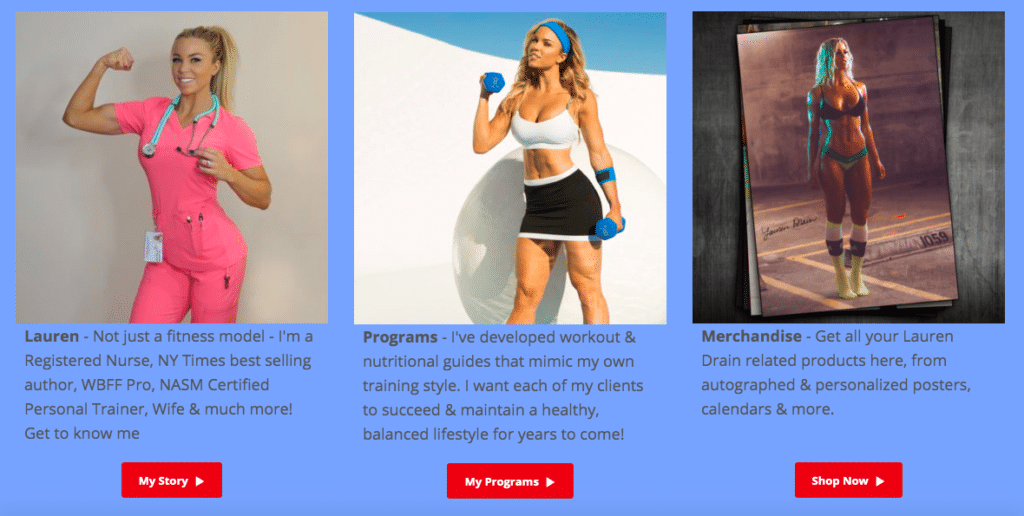
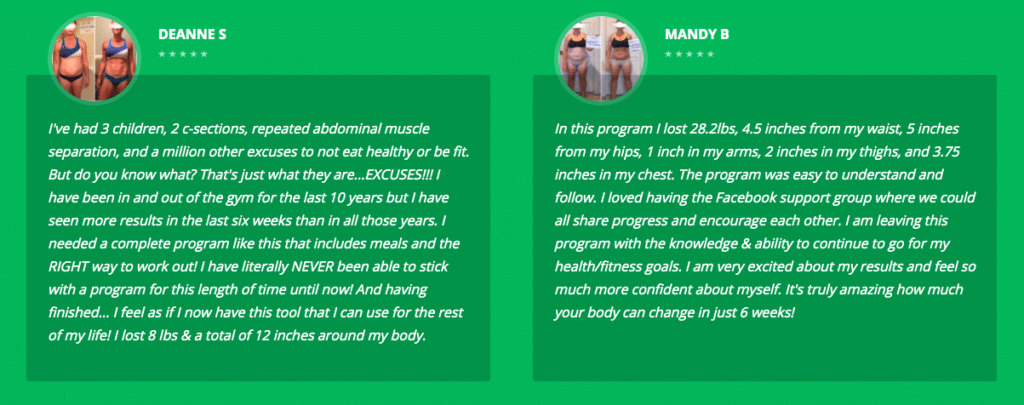
But one tab over, in the “My Story” section of her site, Lauren’s personal brand shines through.
Instead of writing a couple of paragraphs about her past experiences and current goals, Drain goes in-depth about seven — that’s right, seven — facets of her life.
She talks about her:
- Lifestyle transformation
- Experience training for bodybuilding competitions
- Background as a nurse
- Book
- Family life
She lays it all on the line, proving her devotion to her craft.
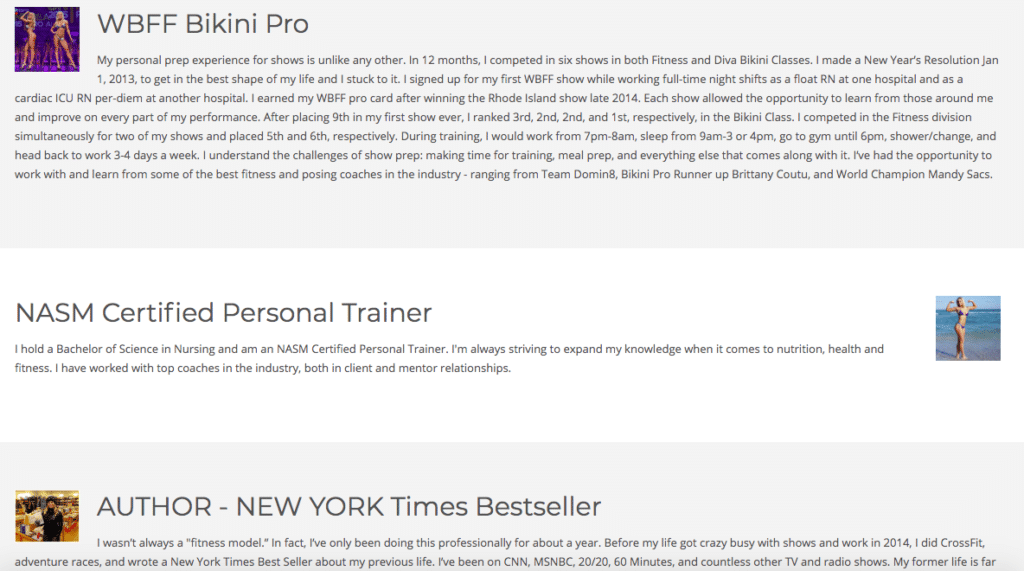
Taken together, it’s easy to see that Lauren’s personal and professional brands, while created with a different tone, are cut from the same cloth. She knows that by developing a personal brand and building a professional brand, she can use both to showcase her passion, talent, and success.
Brand recognition is a critical aspect of any type of marketing, which makes personal and professional branding an important foundation for the rest of the strategies we’ll go through in this guide.
Additional Branding Resources:
- Check out our blog post on professional branding for salons and spas.
- Download this guide to social media marketing, where branding is at its best.
How to Create a Free Website for a Small Business
Once you have your personal and professional brands on lock, your next step should be to bring them to life with your brand’s website.
Clients want the DL on your business as fast as possible, and they’re not going to pick up the phone and call you to get it. That means you need to know how to make a free website for your small business.
Website Design Inspiration
Your website should represent all of the branding elements you’ve created so far, and it should do so in an attractive and user-friendly way. Stumped on what to add to your site? Start with this information:
- A “book now” button
- A breakdown of your services
- High-quality photos of your work
- Client testimonials (like these reviews for Schedulicity)
- An “about me” or “my story” tab
From there, you can work on the design factor.
Need some inspiration?
Hailey Adickes created a website for her business for free with Wix, and it’s as sleek as the hair she styles. The background of the site is pure white, which serves as a stark contrast to the bold, graphic images throughout her portfolio.

Across her site, Adickes’ body of work speaks for itself. There aren’t any unrelated images or text boxes to distract from her talent.
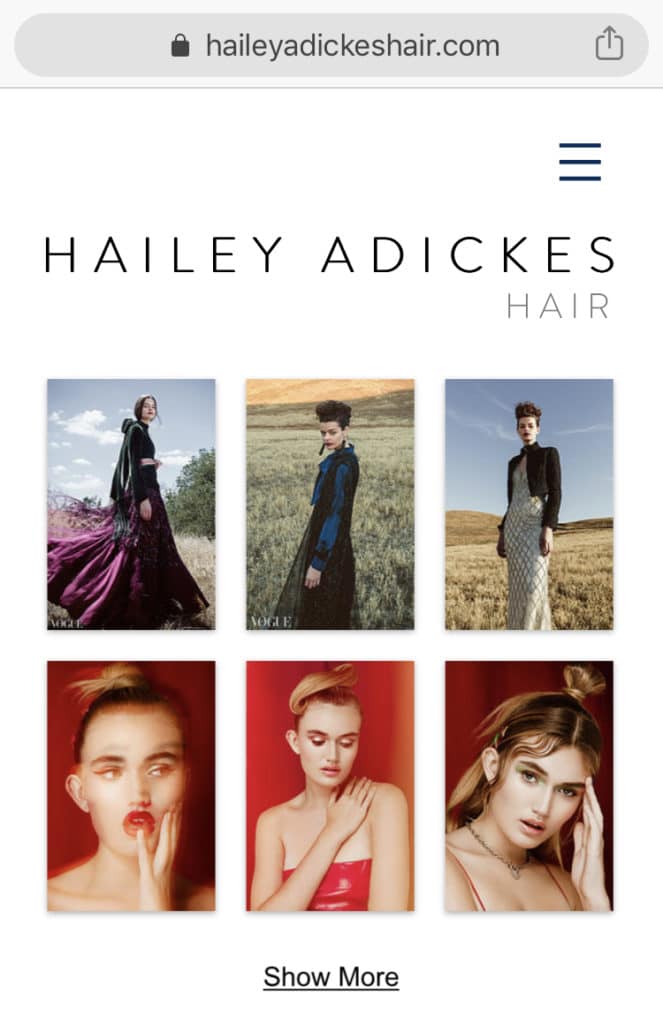
If that’s not enough to get potential clients interested, they can use the simple navigation menu to find news about Adickes.
Her press clippings include interviews and editorial spreads that site visitors can check out to learn more about her and her background.
Once they’re interested in getting in touch with her, the contact page is simple, clean, and informative. As a bonus, Adickes’ site looks great on desktop and mobile devices.
So, sure, you might be creating a website for your business for free, but Adickes shows that doesn’t mean your site can’t be just as powerful as a big company’s site.
If it’s easy on the eyes and tells a good story, you’re on your way to attracting new customers.
Additional Website Resources:
- With your Schedulicity account, you get a business listing in Our Marketplace that widens your exposure to potential clients. Learn more about it + other scheduling features.
- If Google’s your thing, consider looking into its website builder tool.
Best SEO Tips for Small Businesses
If you want to help your customers find your shiny new site, consider the importance of SEO for small businesses.
SEO stands for search engine optimization, and that just means you’re making it easy for search engines to recognize that your content is valuable for readers.
One of the biggest benefits of SEO for small businesses is that your efforts here can increase the impact that all the rest of your marketing strategies have.
By incorporating SEO tactics when you create any kind of content, you increase the chance that it will show up sooner on Google.
That means more eyes on your content and, hopefully, more appointments in the books. It’s a no-brainer!
SEO Examples
For a look at what these SEO strategies for small businesses in practice, let’s go back to Lauren Drain’s website. Her homepage includes several simple headers that describe what she offers.
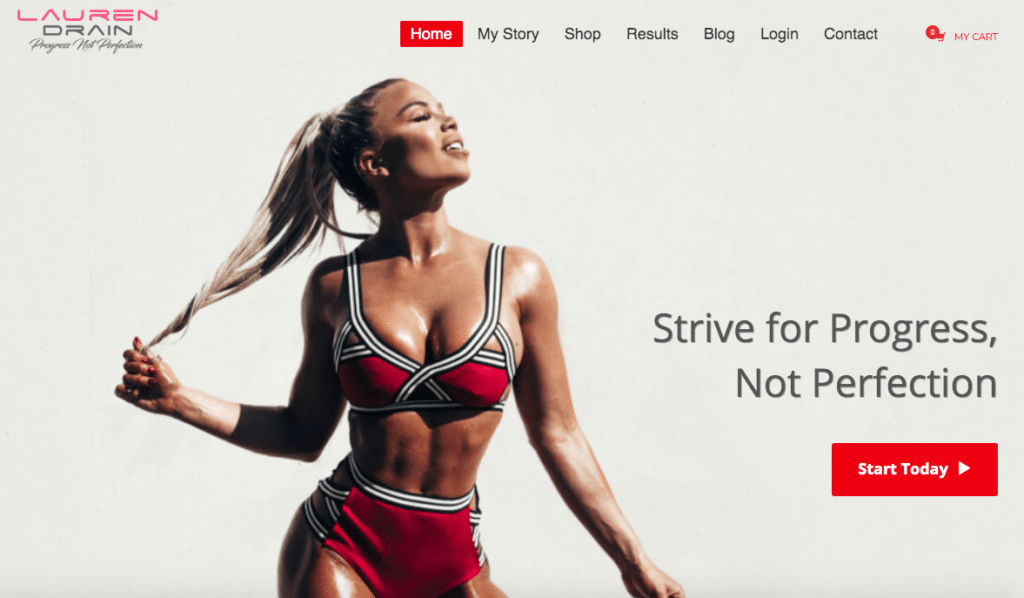
At the bottom of the page, she includes a call to action asking visitors to try out her programs as well as a space for potential clients to sign up for her newsletter.

These elements help educate clients — and search engines — about what Drain’s business is all about. They also help drive clients to provide email addresses that Drain can use for continued communication.
Want to see more?
Rachel Paul, the “college nutritionist,” is also killing the SEO game.
According to a traffic analysis tool, Paul’s website organically ranks for more than 12,000 keywords, 141 of which are in first, second, or third position.
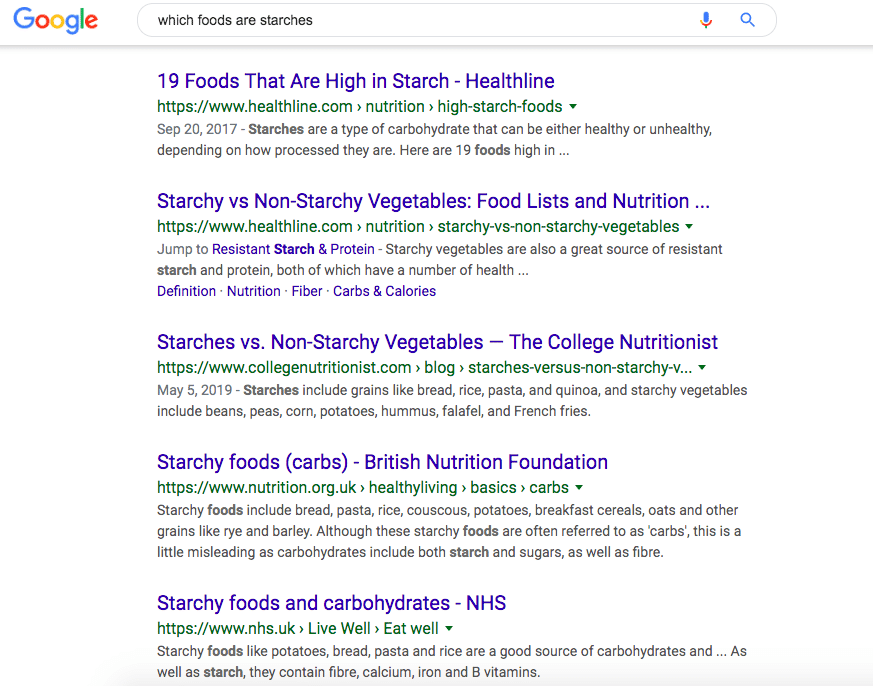
Her blog is likely the source of all that SEO goodness, seeing as her posts on meal prepping and starchy vegetables get hundreds or even thousands of visitors
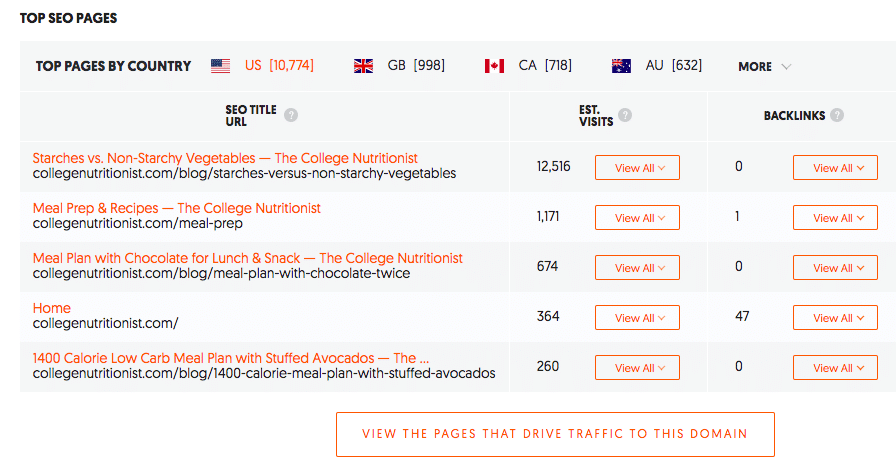
SEO is a critical component of marketing strategy for startups in today’s digital age. If you follow in Drain and Paul’s footsteps, you’ll see your keyword rankings start increasing in no time.
Additional Resources:
- This blog post from Neil Patel defines the different types of SEO.
- Search Engine Journal has additional information on ranking strategies.
Email Marketing Tips
Next up on our tour through top marketing strategies is trusty email marketing. It might seem old-school, but it’s effective and carries a huge ROI.
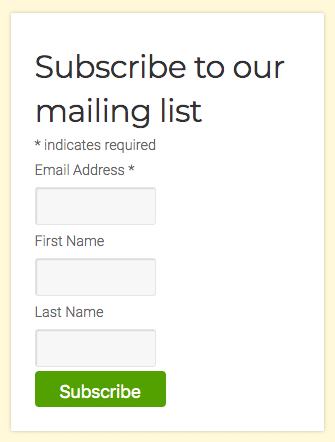
The importance of email marketing stems from the fact that it’s a great way to build a relationship with clients because it allows you to target content directly to their inboxes.
Plus, if they signed up for a newsletter or other email list, there’s a good chance they have more than a passing interest in your service.
San Francisco-based yoga studio owner Andrea Stern uses email marketing to her advantage. She offers local yoga enthusiasts a monthly newsletter that helps build a sense of community among her customers.
She also uses email to inform customers about studio news, to promote specials, and to introduce new classes or instructors.
With email marketing tools, you can schedule similar messages to go out to your whole client list at once when a discount goes live or when you have news to share.

Stern’s marketing efforts have worked well enough that she needed to move the studio to a new space, and you can bet she used email to let her regulars know about all the changes that went along with it.
With some email marketing tips in your back pocket, you can set up email campaigns for new clients, returning guests, and even potential customers
Additional Email Marketing Resources:
- With Schedulicity, you can set up emails to send automatically. Our email templates make it easy to create effective, eye-catching emails fast. (Plus, our Automated Marketing add-on offers analytics on your open rates and more.)
- This post from The Balance Small Business has more information about email marketing services.
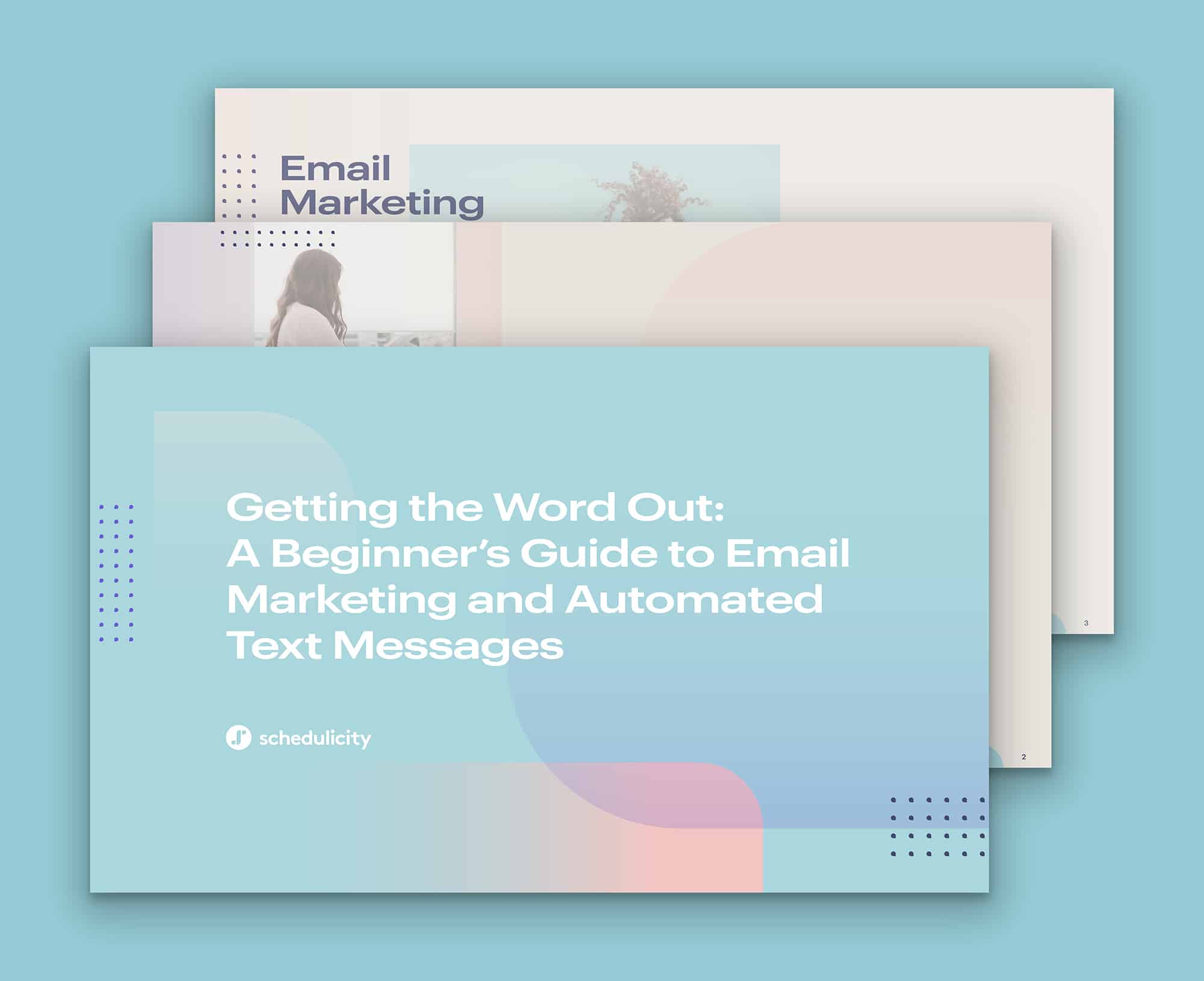
Getting the Word Out:
A Beginner’s Guide to Email Marketing and Automated Text Messages
Get the GuideSocial Media Marketing Tips for Small Business
Even if you feel like a social media pro, it’s critical to realize that social media tips for small business owners might be different from what you already know.
The impact that platforms like Facebook, Pinterest, and Instagram can have on your business depends on how you use them — you can’t just post randomly on each platform and expect to see a boost in bookings ASAP.
Using each of these social sites for business requires nuance and strategy.
And one brand that’s got it all figured out is Drybar.
Drybar’s offerings are specific: Its salons offer blowouts, and any products it sells are made to help customers get more volume in their hair at home.
The brand’s social media pages reflect that singular focus throughout.
On Facebook, Drybar engages with customers and fans by asking them to talk about their experiences and providing information about upcoming sales.
These posts give followers a reason to follow — they offer up-to-the-minute news as well as interactions that make customers feel like they’re in an exclusive club.
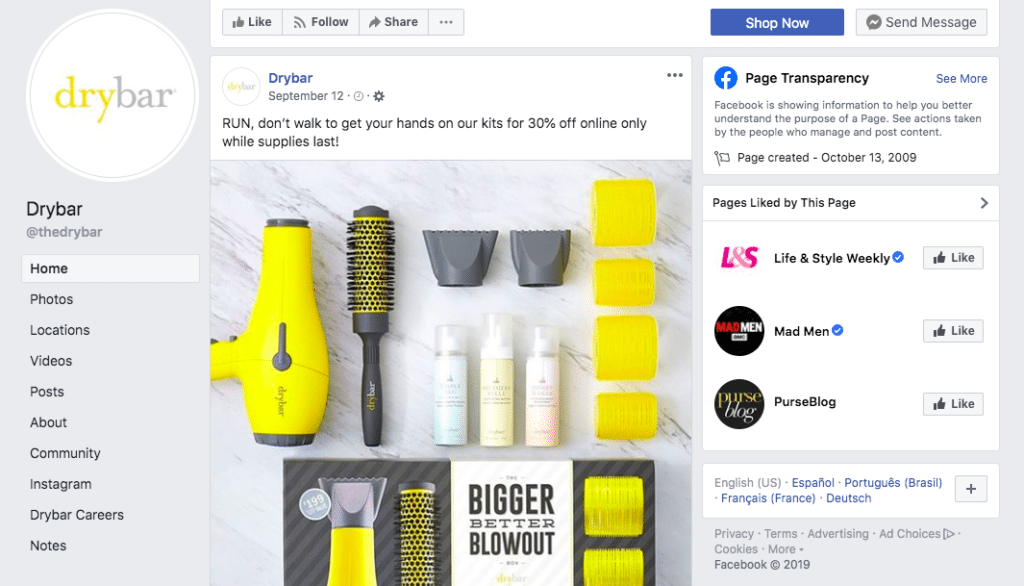
The Facebook page also includes a pop-out version of Drybar’s story, which helps customers feel a more emotional tie to the brand.

On Instagram, Drybar focuses its efforts on posting high-quality images of real customers’ blowouts, stylized shots of its products, and video tutorials showing clients how to achieve beautiful styles from the comfort of their own homes.
The brand posts regularly, giving followers what they want — a consistent flow of eye-catching posts.
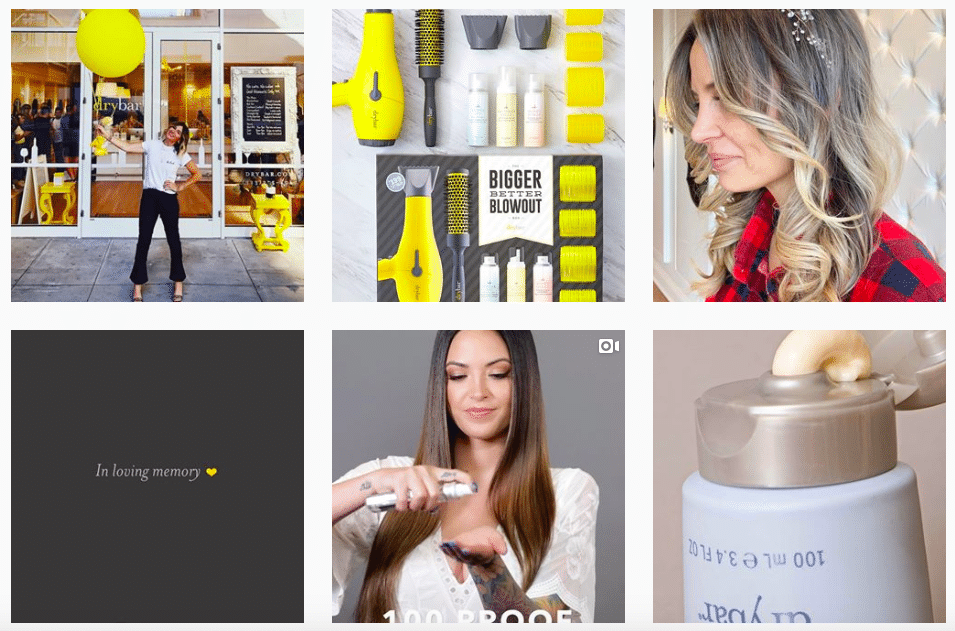
In addition to posting content to its feed, Drybar posts Stories and collects them in Highlights for followers to access later.
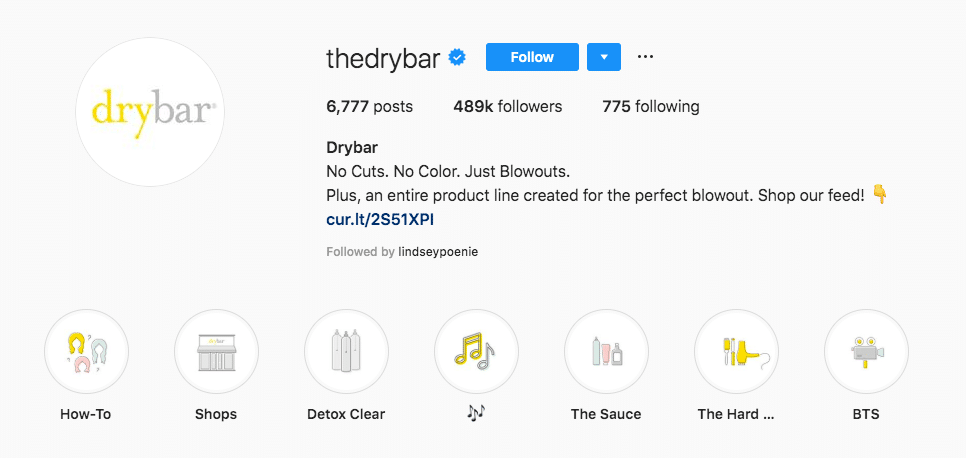
Pinterst
Finally, on Pinterest, Drybar’s thousands of followers get a full dose of hair inspiration every time they visit.
Drybar’s pins are separated into boards based on product, hairstyle, how-to, and more — and they get bonus points for consistency, because their boards share the same name as some of their Instagram highlights.

The pins link back to Drybar’s account creation page, making it easy for people who want to try their services to book an appointment ASAP.
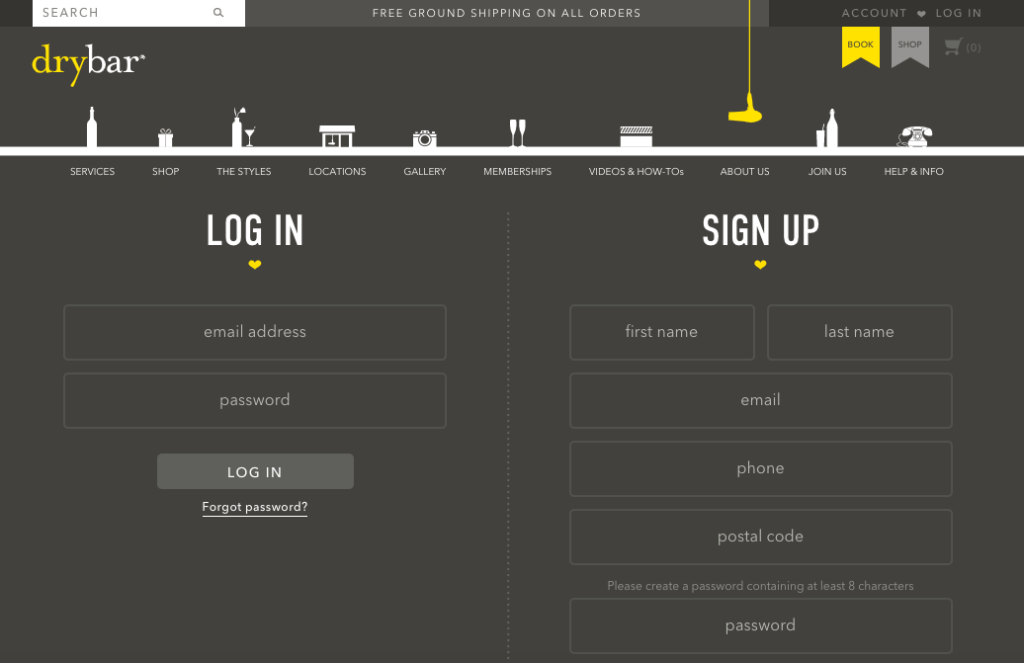
The benefits of using Pinterest for business and the rewards you can reap from Facebook and Instagram marketing boil down to this formula: Quality posts plus a consistent schedule = more followers. More followers = more potential appointments.
Use these social media marketing tips for small businesses to start increasing your follower counts today.
Additional Resources:
- Need some Instagram marketing tips? We’ve got a blog for that.
- For social media tips from experts, check out this article from Forbes.
Influencer Marketing Tools & Examples
We talked a lot about trust and relationship-building so far — now, we’re going to take that to a new level.
The benefits of influencer marketing are all about trust. Influencers’ entire careers center on their ability to show followers that their opinions can be trusted.
So, what better way to get your audience to trust you than to partner with an awesome influencer?
(Psst… if you are an influencer and want to partner with Schedulicity, check out our program here.)
Fitness and yoga influencer Jocelyn Steiber knows all about how great these partnerships can be.
She first encountered influencers via her own company, which worked with influencers to produce campaigns.
In the early 2010s, for example, Steiber worked with fitness influencers in New York City to create video content for Lucy Activewear. As she spent more time with them, she realized the influencer life might be right for her.
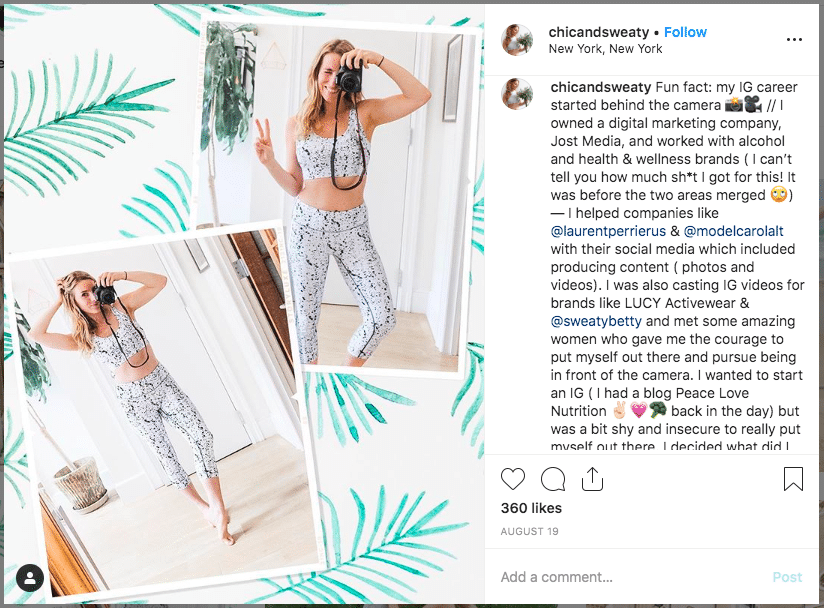
From there, she started to build up her own social media network through Instagram and in-person events around her home of New York City.
Steiber’s “chic and sweaty” branding is relatable for her followers, and through dedication and authentic posts, she’s firmly established herself as an influencer in her space.
Since then, she has worked with several brands, including Headspace and DSW.
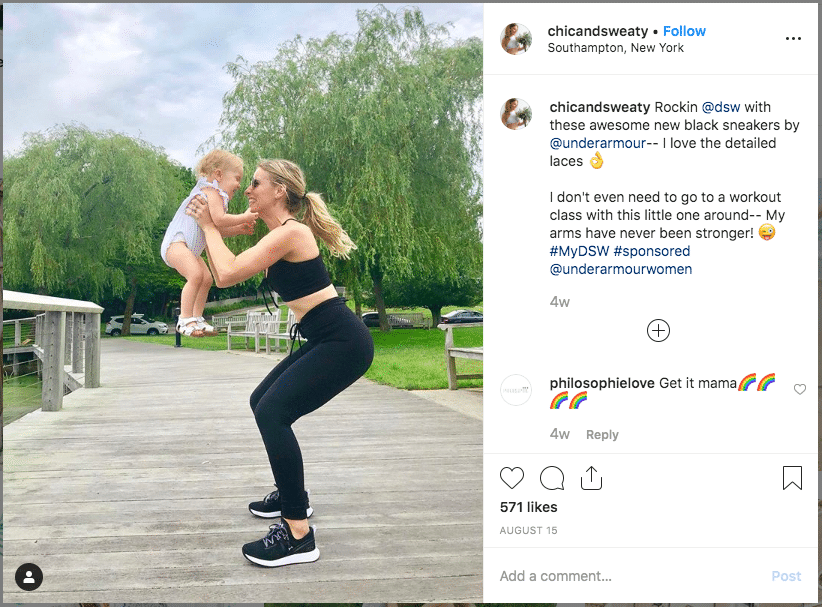
If you need some references on what a great influencer’s profile looks like or tips on how to connect with influencers, check out some of the top influencers in your industry, like @philipwolffhair and @ninatulio for hair stylists, @zoesugg for beauty, and @michelle_lewin for fitness.
Additional Resources:
- We’ve also compiled a list of top influencers in the hair, beauty, and fitness space.
- Small Business Trends has information on useful influencer marketing platforms.
How Can Schedulicity Help?
Together, all these marketing strategies for startups combine to become a powerful campaign to get you more clients. And that’s exactly what we want to help you do.
At Schedulicity, our goal is to help you save time on the details of running a business so you can spend it doing the work you love. In addition to our scheduling and payment platforms, we offer several marketing tools that can help you bring to life the advice we’ve compiled in this guide.
Our automated email marketing lets you send attractive, fun emails to clients at scale.
The Automated Marketing add-on also gives you reports on key email metrics like open rates and click-through rates.
Our “Fill My Book” and “Deal Manager” tools help you automatically create and manage discounts for hard-to-book time slots or any specials you want to run.
To learn more about how Schedulicity can help implement a marketing strategy for entrepreneurs and small business owners and make running your business a snap, check out our booking platform today.
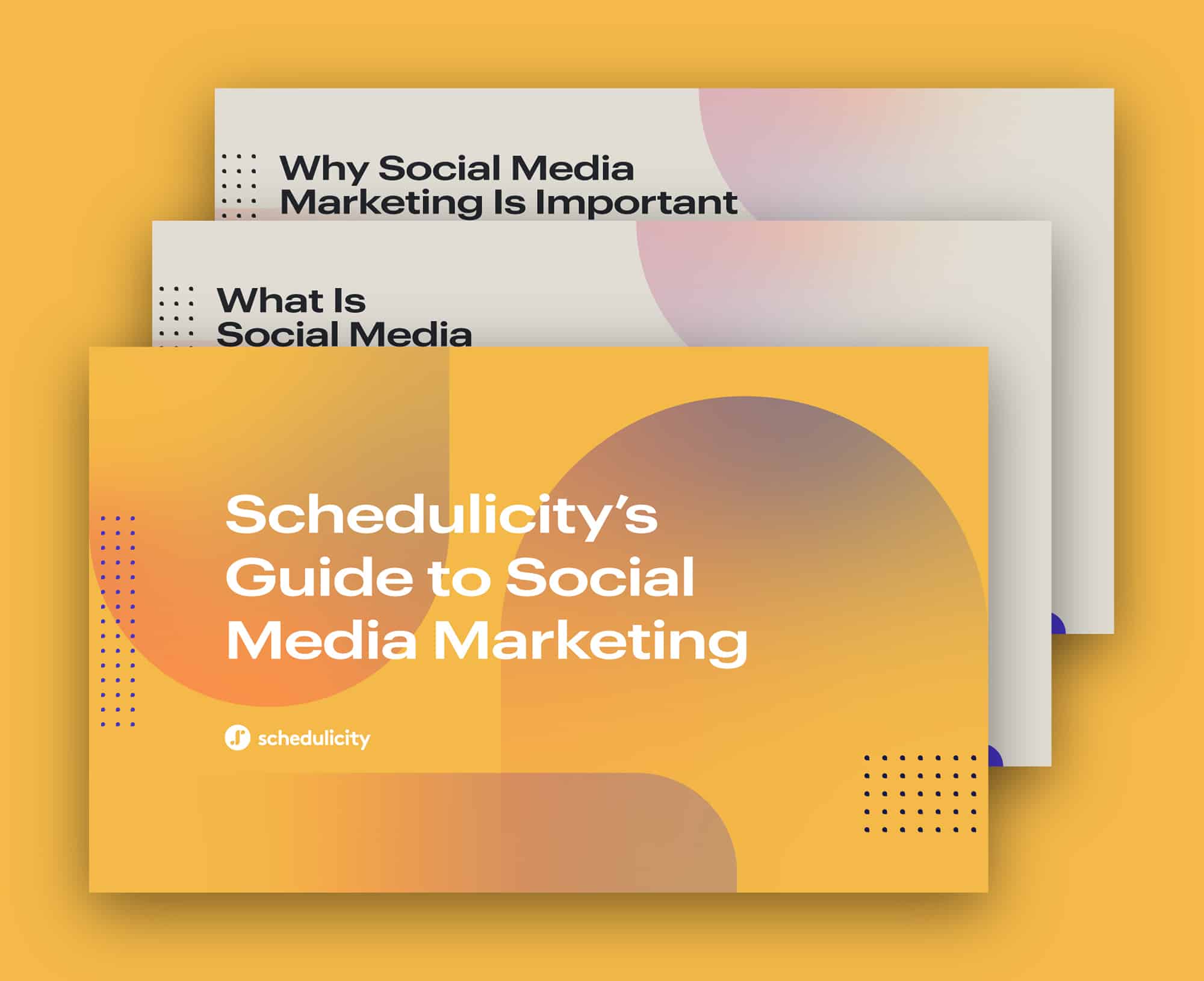
Social Media Marketing 101
Deep-dive into trends, tools, and hashtags that will take your brand – and small business – to the next level.
Get the Guide






